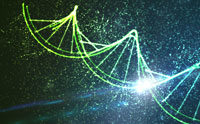By Callie Joubert The recent claim that “conflicting networks” in the brain that explain belief and unbelief in God cannot be true. …read more Read more here: AIG Daily
Medical students learn classic pathology cases to help them identify diseases. One such case involved human cannibals who ended up with tremors, seizures, balance disorders, and hallucinations after eating nervous tissue. The fatal diseases, Kuru disease and Creutzfeld-Jakob disease (CJD), which are akin to mad cow disease, are caused by mysterious transmissible proteins known as prions. These proteins can be found in neurons. When a prion becomes pathologically misshapen, an infectious change reaction occurs where prions in the host become shaped the same way as the infecting prion. Could prions play a role in evolution? More… …read more Read more [More]
By Dr. Andrew A. Snelling According to science textbooks, a series of rock layers covers the earth, representing many eras over “millions of years.” Are these charts accurate? …read more Read more here: AIG Daily
When researchers assume fossils with DNA are a certain age, they are faced with the glaring contradiction that basic chemistry means DNA should not be present. …read more Read more here: creation.com
By Dr. Kevin Anderson The recent report of a 1.5-billion-year-old fossil1 has brought attention once again to the alleged evolution of multicellular systems. …read more Read more here: AIG Daily
An extraordinary bird that feigns injury to distract predators so its young can escape, is an example of incredible design and not random chance. …read more Read more here: creation.com
Secular speculations insist Earth coalesced into its current state over four billion years ago, leaving one huge problem: the young sun would have been so dim that Earth would have frozen. Secular astronomers have long invoked methane gas to defray this dilemma, called the “faint young sun paradox.” A recent study revealed two new reasons to totally reject methane as a rescuing device, leaving this paradox stronger than ever. More… …read more Read more here: icr.org
By Jean O’Micks With the inclusion of 37 postcranial morphological characters, this work attempts to reassess the baraminic classification of H. naledi. …read more Read more here: AIG Daily
By Ken Ham For the evolutionary story to be possible, there must be some evidence of creatures undergoing intermediate stages of evolution. So do a dwarf gecko’s hairy toes show signs of stepwise evolution in progress? A recent news story caught my eye when I read the following quotes: But new analysis suggests one Gonatodes species is on its way to developing adhesion. Researchers at the University of California, Riverside say Gonatodes humeralis offers a “snapshot” of evolution. “Until now, we had not seen a gecko showing the beginnings of the adhesive system,” [Timothy Higham, a gecko expert and associate [More]
By Dr. Andrew A. Snelling New chemical analyses appear to show that some of the early mantle rock may have survived until today in rock formations called flood basalts. …read more Read more here: AIG Daily
Long before ‘modern science’ emerged, the Bible accurately described the hydrologic cycle of our planet. …read more Read more here: creation.com
By Dr. Kevin Anderson Despite a large body of evidence for the authenticity of the dinosaur tissue, there remains a pattern of denial within the evolutionist community. …read more Read more here: AIG Daily
By Dr. Elizabeth Mitchell Discovery of sophisticated eyes in a fossilized hagfish has dethroned the modern blind hagfish as the only observable intermediate form in eye evolution. …read more Read more here: AIG Daily
Once upon a time, only a single Italian fossil—a crushed specimen that paleontologists had to reconstruct—represented the extinct reptile Drepanosaurus. Now, a team of American scientists described a new Drepanosaurus specimen from New Mexico. Instead of fingers, it had a massive claw on each hand, and its curling tail was claw-tipped. These features have evolutionists scratching their heads over where it came from and why it looks more like a particular living mammal than a reptile. More… …read more Read more here: icr.org
A recent paper shows that the skill of some songbirds to extemporaneously innovate musical repertoire equals that of human musicians. Since none of the apes have this complex human-like capability, the discovery poses a big problem for the evolutionary model of human origins. More… …read more Read more here: icr.org
By Ken Ham For scientists who believe life evolved from chemicals, there’s a huge push to recreate how that might have happened by attempting to make life in a lab. But no matter how many times they’ve tried, scientists have not been able to make life from nonliving chemicals. As the law of biogenesis states, life always comes from other life. Even if they make life in a lab, scientists would be showing that it took intelligence, not natural processes, to do it! Dr. Andrew Fabich, a microbiologist and associate professor of biology at Truett McConnell University, recently wrote a [More]
By Ken Ham A recent article highlighted the Cal Orcko archaeological site in Bolivia. This site in South America has numerous, well-preserved dinosaur footprints (originally listed as over 5,000), and another 5,000 tracks were discovered in 2015. Some of the dinosaurs that left these footprints were Ankylosaurs, Titanosaurs, Carnotaurus, and a juvenile Tyrannosaurus rex. These fossilized dinosaur footprints were originally discovered in 1985, but local mining of the limestone in the area has brought many more prints to light, starting in 1994. The area is now an official Bolivian paleontological site and an application has been submitted to designate it [More]
A deistic view of the ‘order of nature’ influenced Charles Lyell’s approach to geology, not observational science. …read more Read more here: creation.com
By Dr. Elizabeth Mitchell The authors of a study in Nature claim to have solved human history’s oldest cold case: how and why our iconic, supposed ancestor Lucy died. …read more Read more here: AIG Daily
Animals dispersing around the world by either land bridges or rafting is accepted by both creationists and secularists. …read more Read more here: creation.com
By Dr. Kevin Anderson For more than a century Christians have looked for the scientific silver bullet that would destroy Darwinian evolution and prove biblical creation to be true. …read more Read more here: AIG Daily
By Ken Ham How did the rattlesnake get its rattle? A recent article about new research on the rattlesnake’s formidable rattle states, “The evolution of the rattle has baffled scientists because, unlike other complex physical traits like eyes or feathers, it has no obvious precursor or intermediate stage.” According to David Pfennig at the University of North Carolina at Chapel Hill, “There is no half-rattle.” Well, to those who start with the Bible, it’s no surprise that no such thing as a “half-rattle” exists. But for an evolutionist this is a major puzzle. Now evolutionists have suggested perhaps snakes started [More]
Can we believe both the Bible and geology? ICR geologist and Research Associate Dr. Tim Clarey uncovers how both fit together in this 5-part podcast series on creation geology. Dr. Clarey shares a unique geological perspective on the worldwide Flood, the origin and demise of dinosaurs, and the ice age. More… …read more Read more here: icr.org
One of the main themes of evolution is the belief that certain types of DNA sequences freely mutate and develop new functions that evolve creatures. This mostly mythical concept was applied to the protein-coding regions of genes, but in recent years this idea was discredited by the discovery of multiple codes imbedded in the same sequence—because the disruption of these codes is typically harmful, mutations are not tolerated. And now another critical imbedded code was discovered, further discrediting the idea of pervasive mutable DNA in genes. More… …read more Read more here: icr.org
An astonishingly complex plant helps provide a technical breakthrough and a smooth solution. …read more Read more here: creation.com
By Dr. David Menton The Creator gave a few select animals—such as horses and camels—unique abilities to serve alongside people in harsh environments. …read more Read more here: AIG Daily




















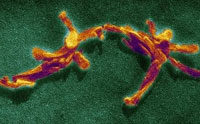




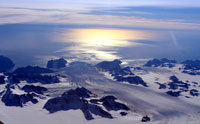
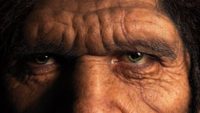



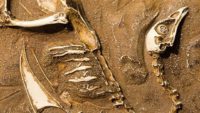







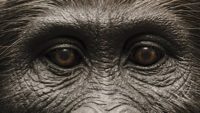



![Creation Geology [Podcast] Creation Geology [Podcast]](http://proofthebibleistrue.com/wp-content/uploads/2016/10/66010-thumb-200x124.jpg)
